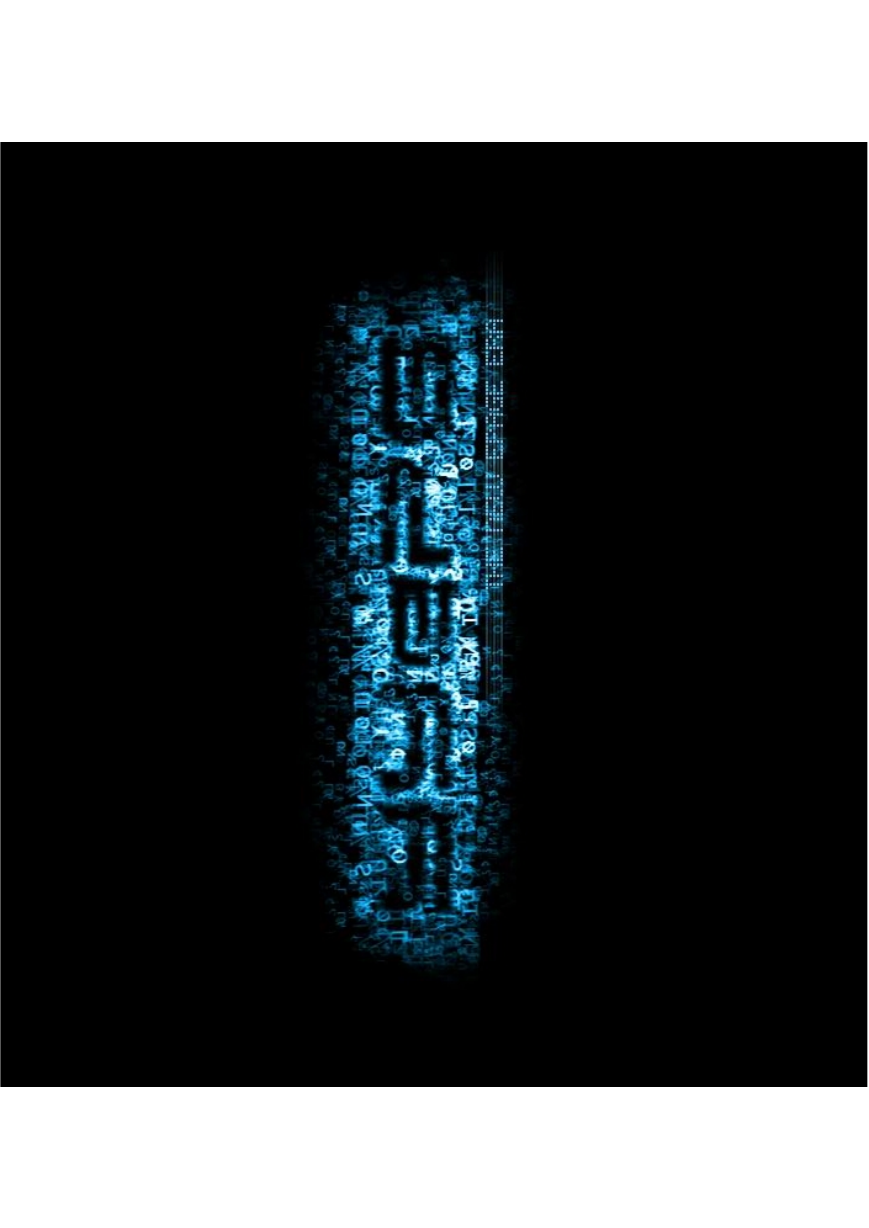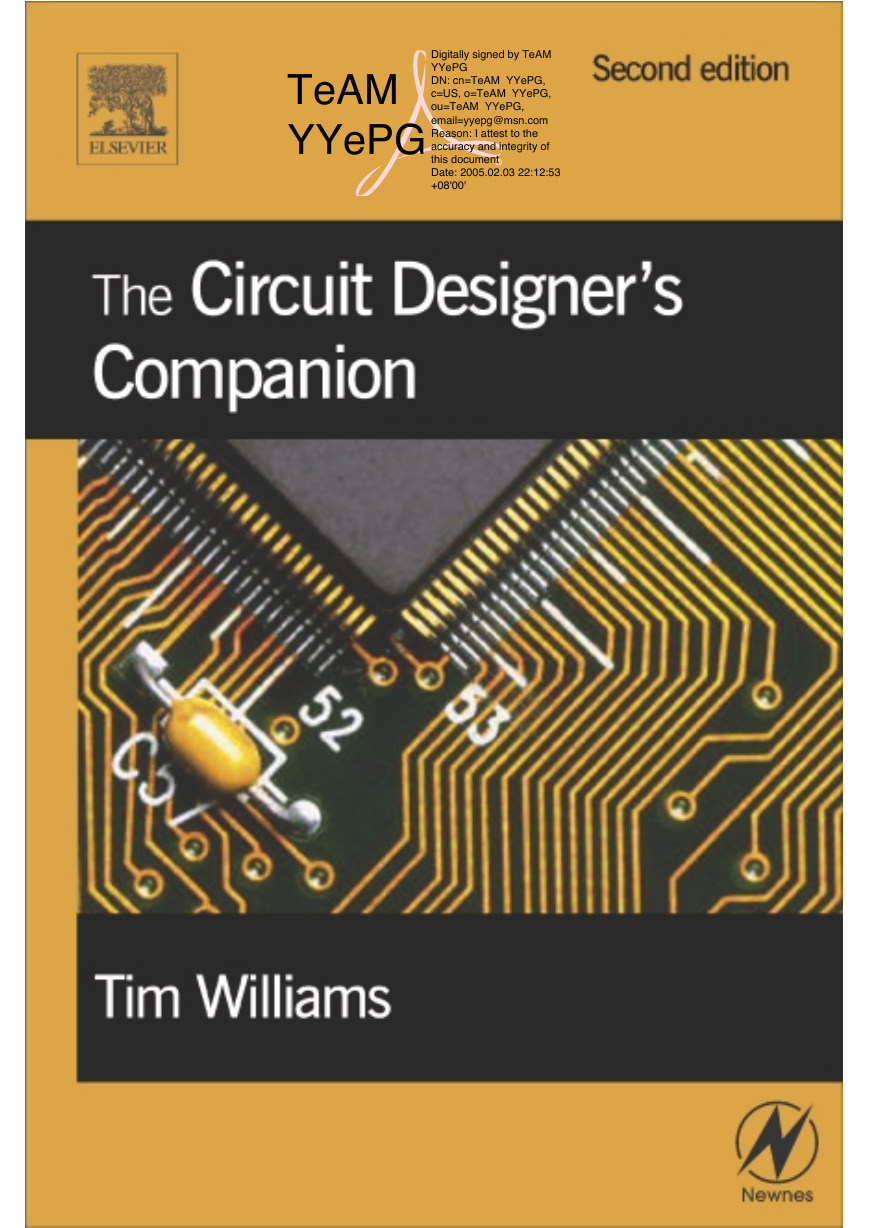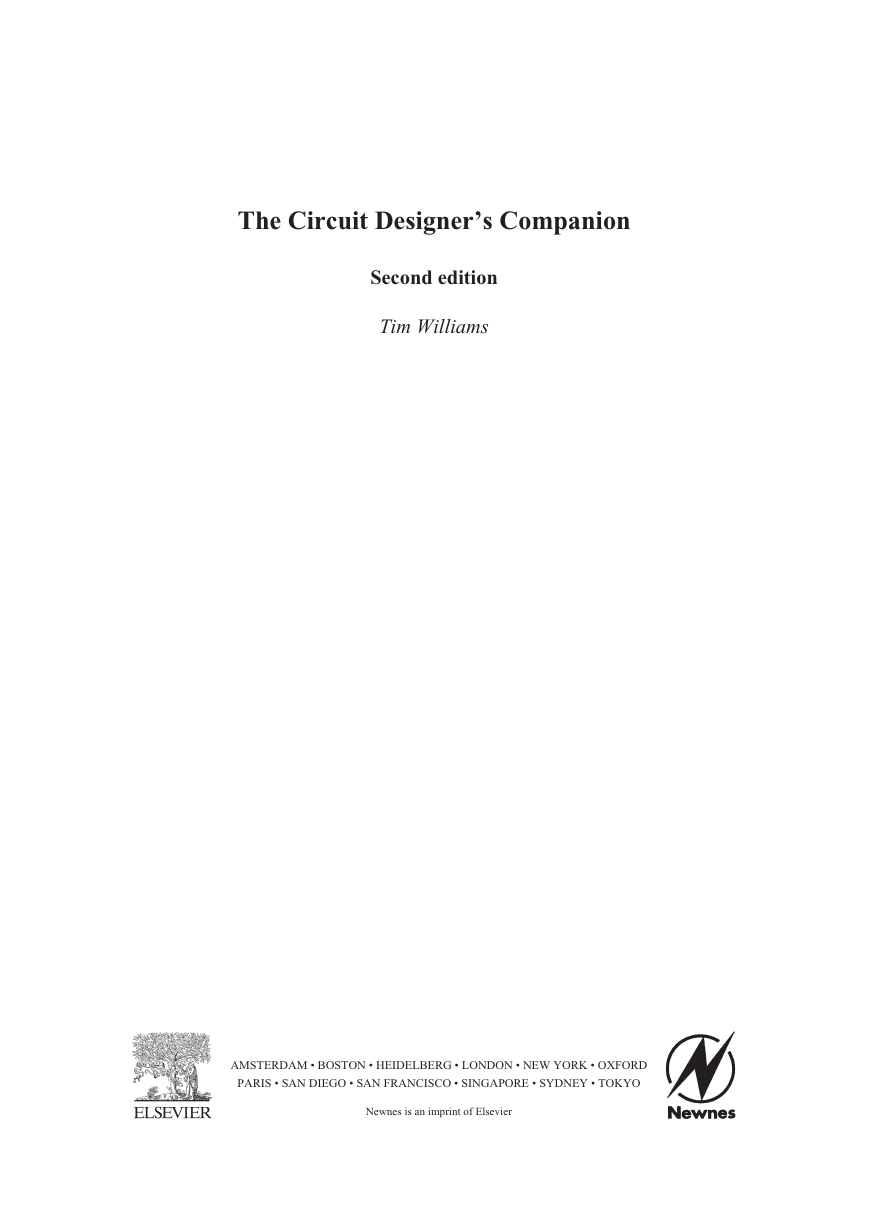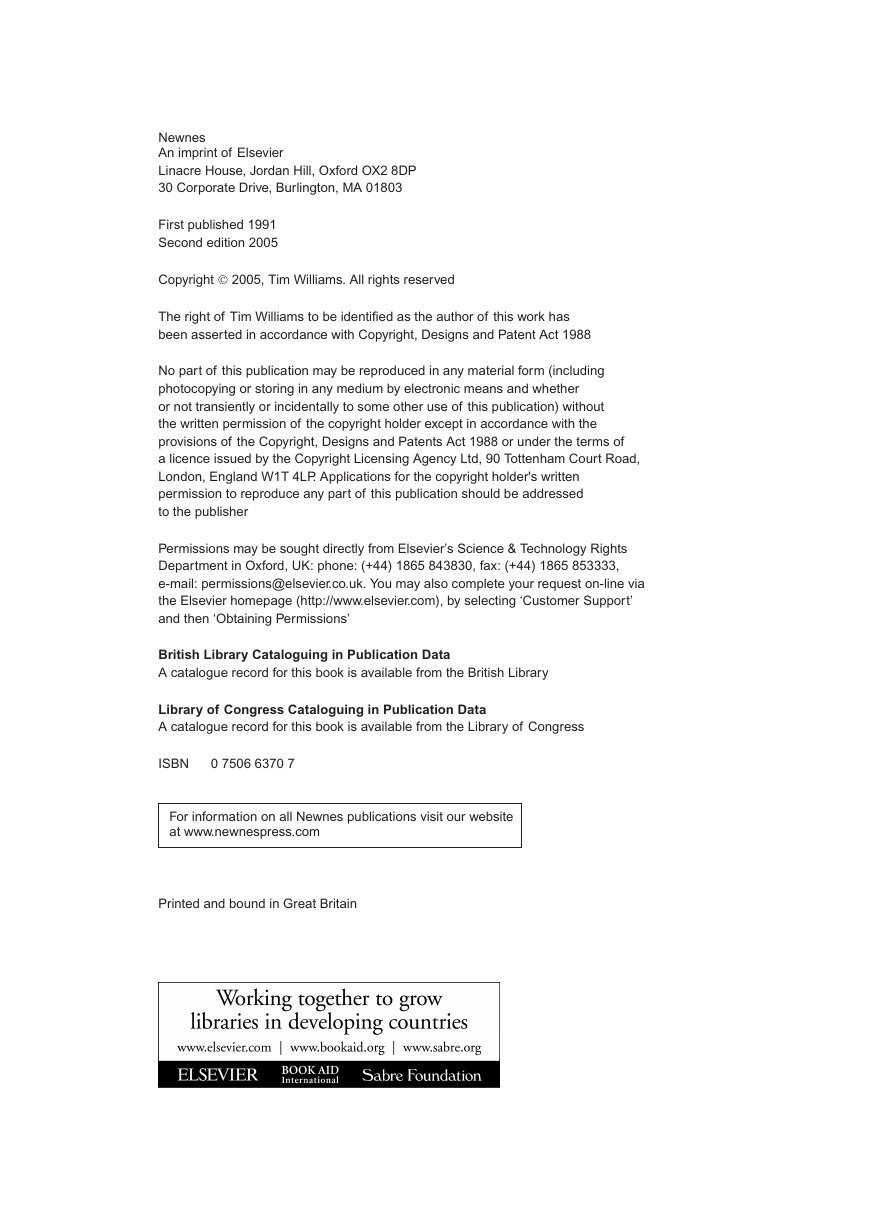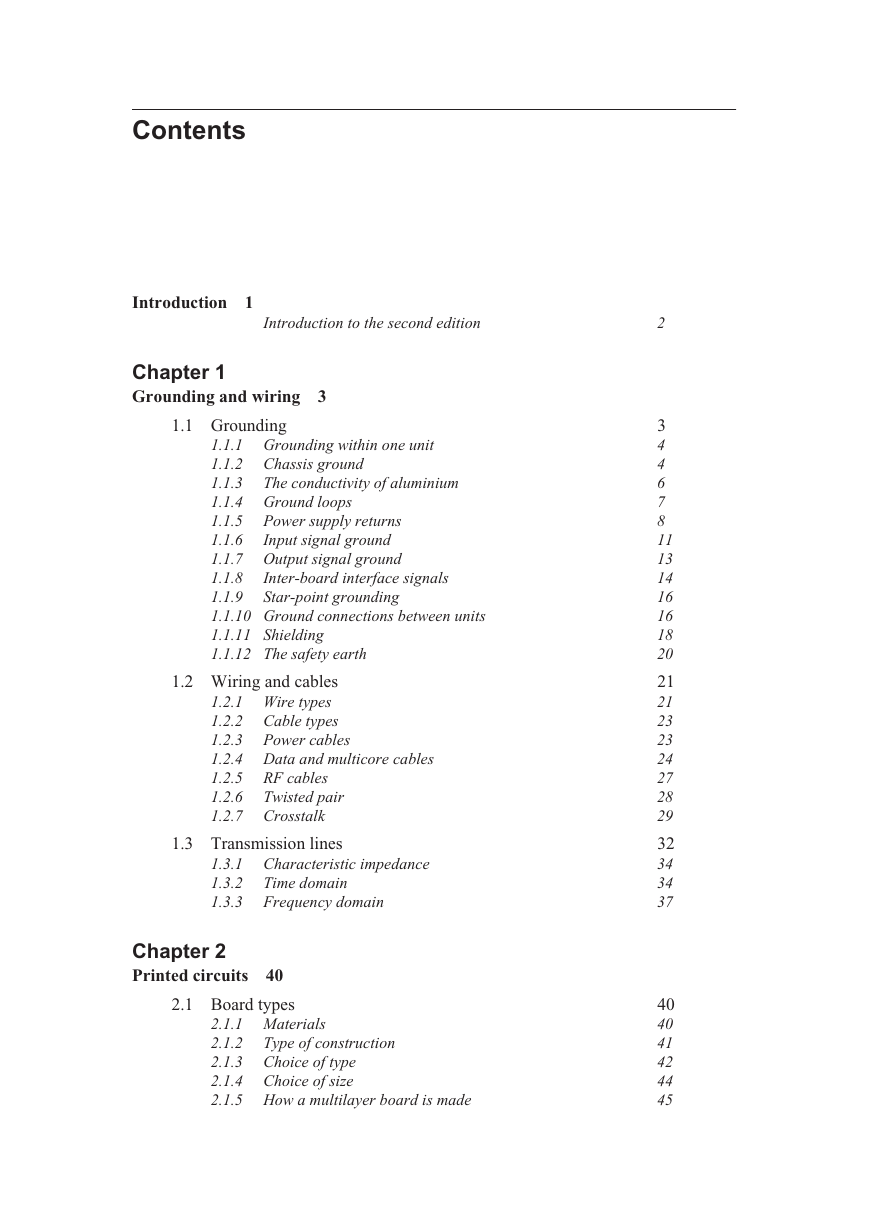�
TeAM
YYePG
Digitally signed by TeAM
YYePG
DN: cn=TeAM YYePG,
c=US, o=TeAM YYePG,
ou=TeAM YYePG,
email=yyepg@msn.com
Reason: I attest to the
accuracy and integrity of
this document
Date: 2005.02.03 22:12:53
+08'00'
The Circuit Designer’s Companion
�
�
The Circuit Designer’s Companion
Second edition
Tim Williams
AMSTERDAM • BOSTON • HEIDELBERG • LONDON • NEW YORK • OXFORD
PARIS • SAN DIEGO • SAN FRANCISCO • SINGAPORE • SYDNEY • TOKYO
Newnes is an imprint of Elsevier
�
Newnes
An imprint of Elsevier
Linacre House, Jordan Hill, Oxford OX2 8DP
30 Corporate Drive, Burlington, MA 01803
First published 1991
Second edition 2005
Copyright © 2005, Tim Williams. All rights reserved
The right of Tim Williams to be identified as the author of this work has
been asserted in accordance with Copyright, Designs and Patent Act 1988
No part of this publication may be reproduced in any material form (including
photocopying or storing in any medium by electronic means and whether
or not transiently or incidentally to some other use of this publication) without
the written permission of the copyright holder except in accordance with the
provisions of the Copyright, Designs and Patents Act 1988 or under the terms of
a licence issued by the Copyright Licensing Agency Ltd, 90 Tottenham Court Road,
London, England W1T 4LP. Applications for the copyright holder's written
permission to reproduce any part of this publication should be addressed
to the publisher
Permissions may be sought directly from Elsevier’s Science & Technology Rights
Department in Oxford, UK: phone: (+44) 1865 843830, fax: (+44) 1865 853333,
e-mail: permissions@elsevier.co.uk. You may also complete your request on-line via
the Elsevier homepage (http://www.elsevier.com), by selecting ‘Customer Support’
and then ‘Obtaining Permissions’
British Library Cataloguing in Publication Data
A catalogue record for this book is available from the British Library
Library of Congress Cataloguing in Publication Data
A catalogue record for this book is available from the Library of Congress
ISBN
0 7506 6370 7
For information on all Newnes publications visit our website
at www.newnespress.com
Printed and bound in Great Britain
�
Contents
Contents v
Introduction 1
Introduction to the second edition
Chapter 1
Grounding and wiring 3
1.1 Grounding
The conductivity of aluminium
Power supply returns
Input signal ground
1.1.1 Grounding within one unit
1.1.2 Chassis ground
1.1.3
1.1.4 Ground loops
1.1.5
1.1.6
1.1.7 Output signal ground
1.1.8
1.1.9
1.1.10 Ground connections between units
1.1.11 Shielding
1.1.12 The safety earth
Inter-board interface signals
Star-point grounding
1.2 Wiring and cables
1.2.1 Wire types
1.2.2 Cable types
1.2.3
1.2.4 Data and multicore cables
1.2.5
1.2.6
1.2.7 Crosstalk
RF cables
Twisted pair
Power cables
1.3 Transmission lines
1.3.1 Characteristic impedance
1.3.2
1.3.3
Time domain
Frequency domain
Chapter 2
Printed circuits 40
2.1 Board types
Type of construction
2.1.1 Materials
2.1.2
2.1.3 Choice of type
2.1.4 Choice of size
2.1.5 How a multilayer board is made
2
3
4
4
6
7
8
11
13
14
16
16
18
20
21
21
23
23
24
27
28
29
32
34
34
37
40
40
41
42
44
45
�
vi Contents
2.2 Design rules
Track routing
Track width and spacing
2.2.1
2.2.2 Hole and pad size
2.2.3
2.2.4 Ground and power distribution
2.2.5 Copper plating and finishing
2.2.6
2.2.7
Solder resist
Terminations and connections
2.3 Board assembly: surface mount and through hole
Surface mount design rules
Package placement
2.3.1
2.3.2
2.3.3 Component identification
2.4 Surface protection
2.4.1 Guarding
2.4.2 Conformal coating
2.5 Sourcing boards and artwork
2.5.1
2.5.2
Artwork
Boards
Chapter 3
Passive components 70
3.1 Resistors
3.1.1
3.1.2
3.1.3
3.1.4
3.1.5
3.1.6
3.1.7
3.1.8
3.1.9
Resistor types
Tolerancing
Temperature coefficient
Power
Inductance
Pulse handling
Extreme values
Fusible and safety resistors
Resistor networks
3.2 Potentiometers
3.2.1
3.2.2
3.2.3
Trimmer types
Panel types
Pot applications
3.3 Capacitors
Single-layer ceramics
Electrolytics
Solid tantalum
3.3.1 Metallised film & paper
3.3.2 Multilayer ceramics
3.3.3
3.3.4
3.3.5
3.3.6 Capacitor applications
3.3.7
3.3.8 Dielectric absorption
3.3.9
Self resonance
Series capacitors and dc leakage
3.4 Inductors
3.4.1
3.4.2
Permeability
Self-capacitance
45
47
50
51
52
55
55
56
58
60
62
63
63
64
65
67
67
68
70
70
73
74
75
76
76
77
79
79
80
81
82
82
85
85
89
90
91
93
94
96
97
97
99
99
101
�
